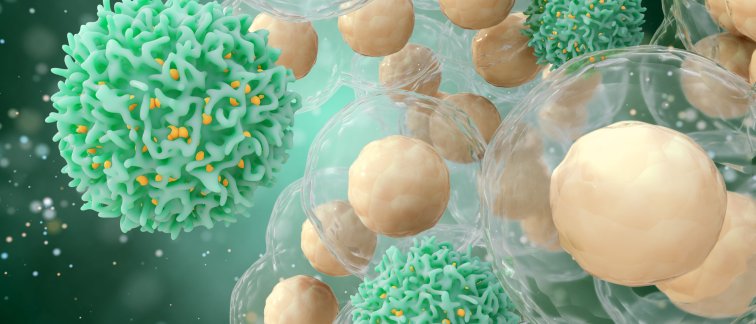To this end, Robbert Spaapen and colleagues have removed certain lipids with a sugar headgroup, so-called glycolipids, from the outside of those tumor cells. They also identified a molecular mechanism that controls the fabrication of those glycolipids. Intervention in this mechanism may improve the survival chances of patients. Spaapen already has a drug in mind. The research is published in Immunity.
Our body cells are covered with many different kinds of glycolipids. Their functions are largely unknown. We have discovered that a certain glycolipid subtype can influence immune responses. These molecules shield proteins required for surveillance of tumors by the immune system. As a consequence, tumor cells with high levels of this type of glycolipids are less efficiently killed by T cells of the immune system.
Spaapen has also discovered that the protein SPPL3 can stop the production of these glycolipids. This is relevant for patients with the most common brain tumors, the gliomas. Several tumors have a lower amount of SPPL3, which leads to a higher production of the glycolipids. This group of patients has a worse chance of survival.
These patients may therefore benefit from inhibiting the glycolipid production. Spaapen envisions potential in a pre-existing drug, which is used to treat a very different type of diseases, namely certain hereditary metabolic diseases. This drug inhibits the formation of all glycolipids, and thus also the subtype that inhibits immune reactions. The researchers found that the drug indeed improves T cell responses in the lab. It is therefore important to investigate in the coming years whether it will also work in patients.

